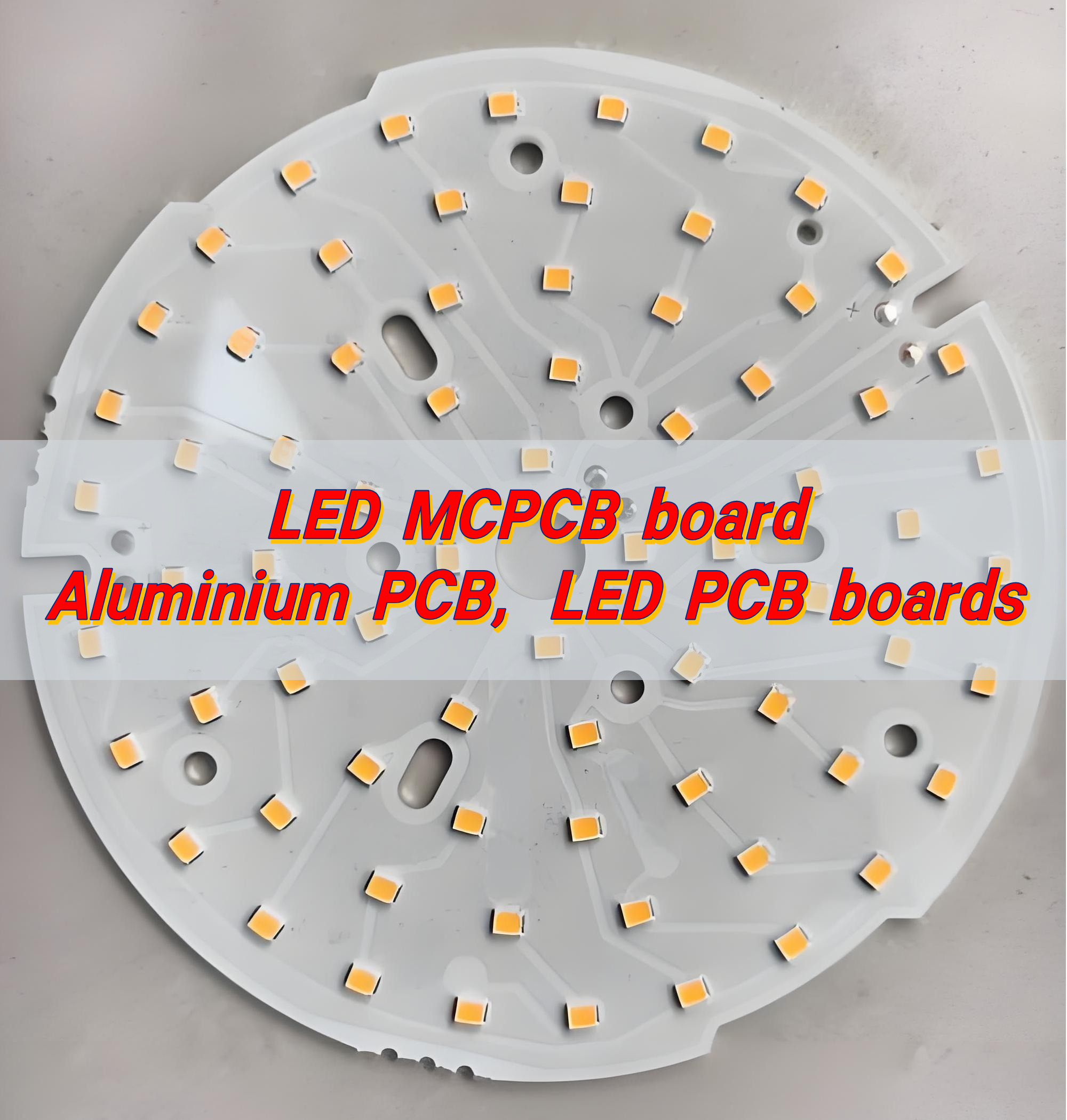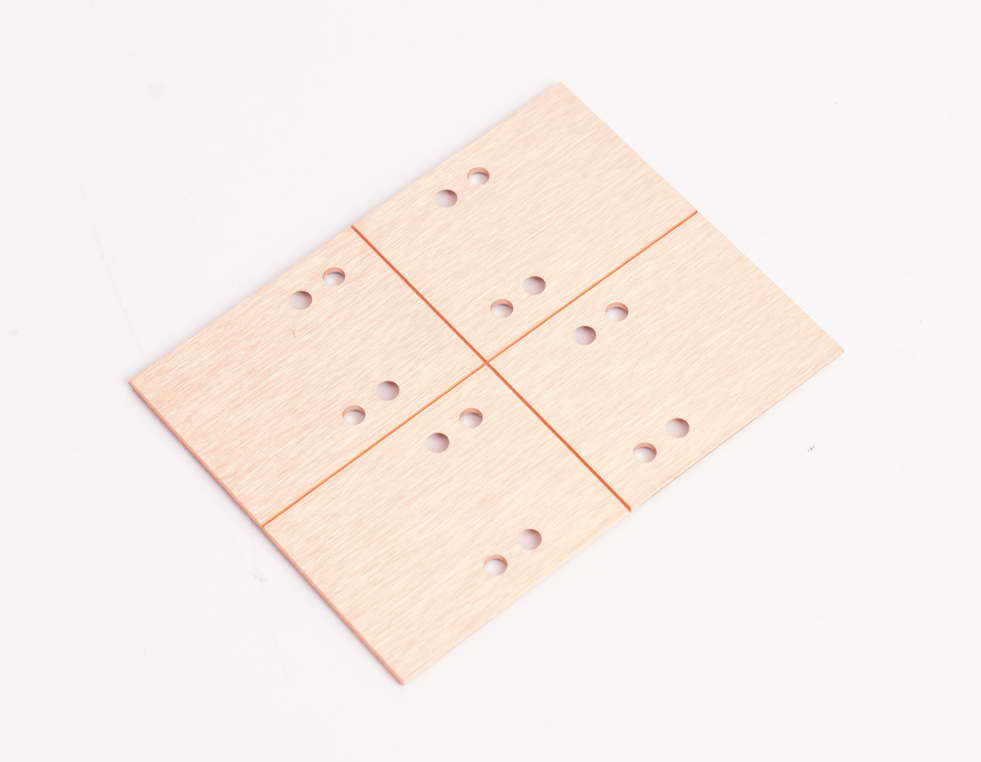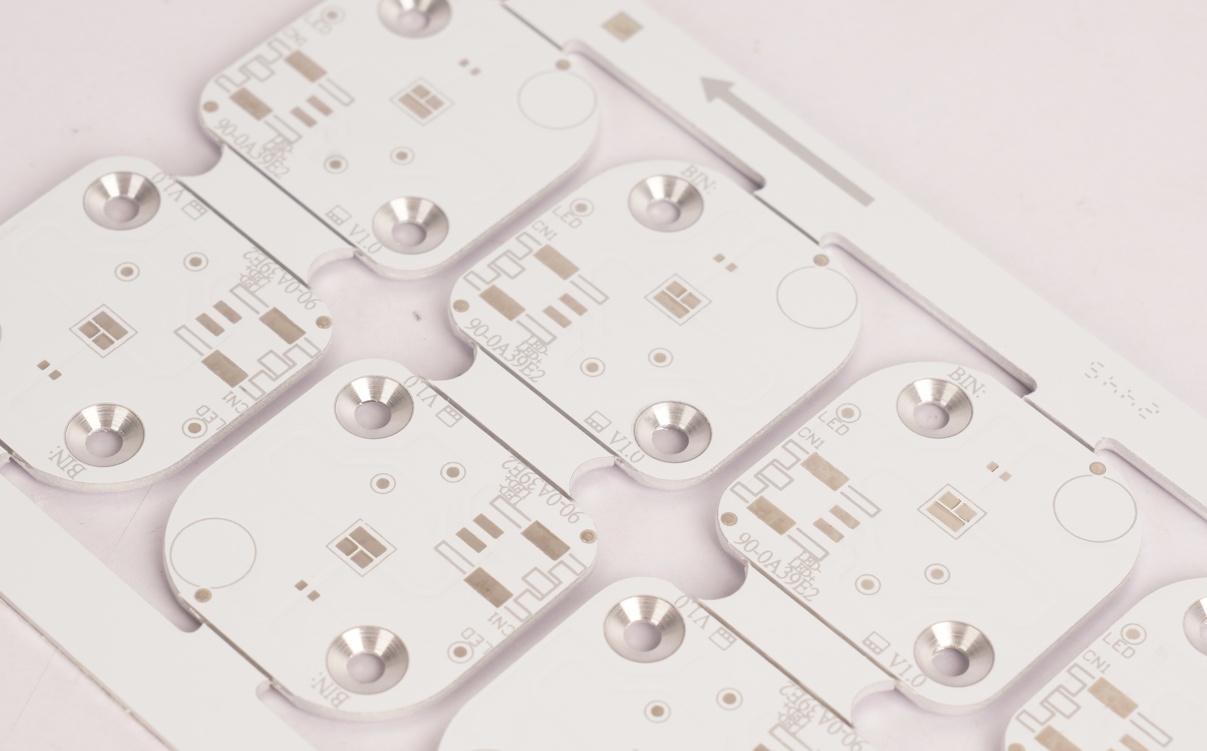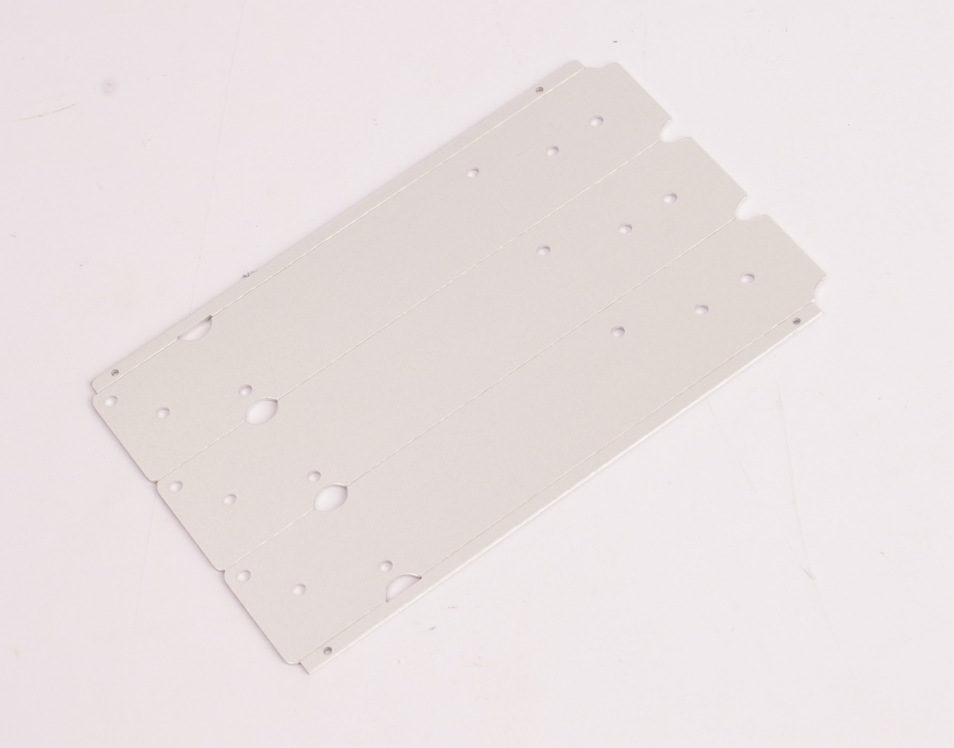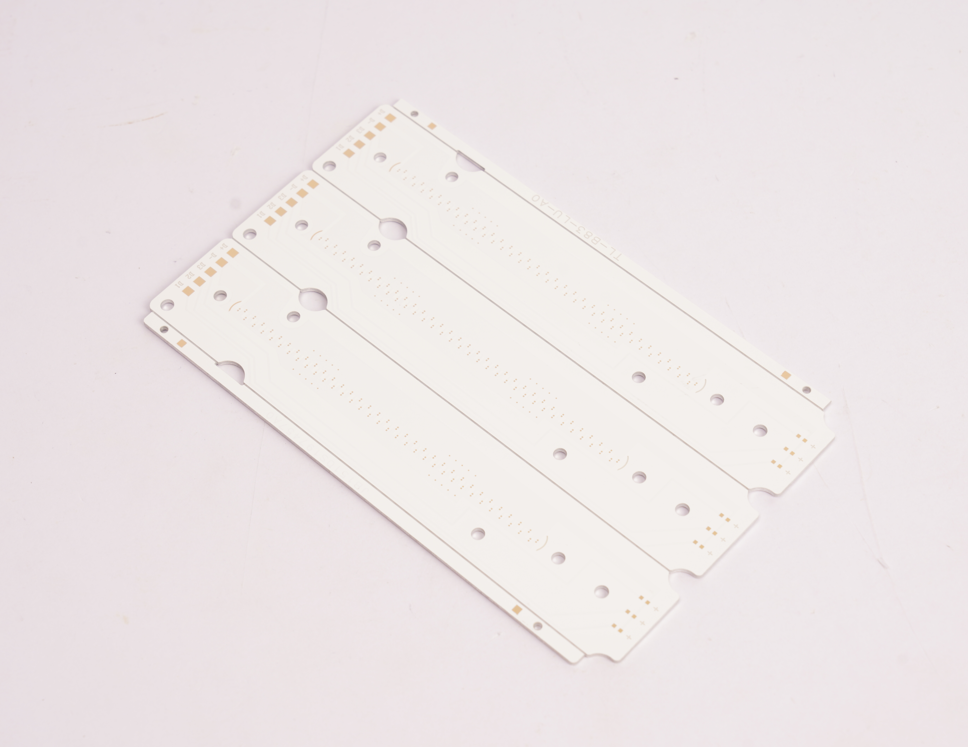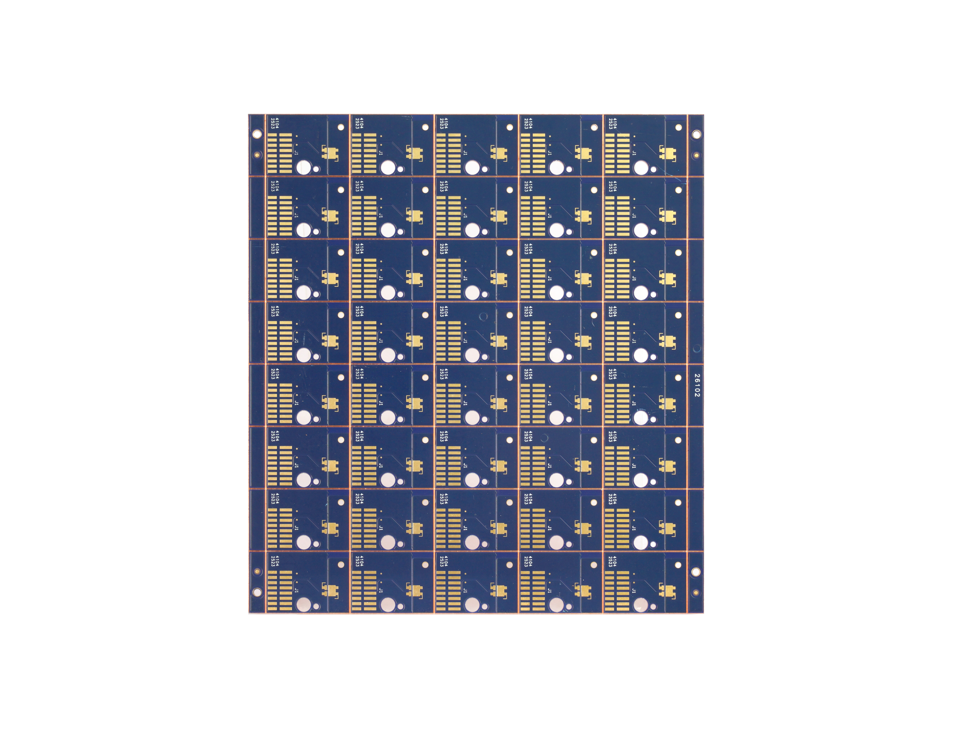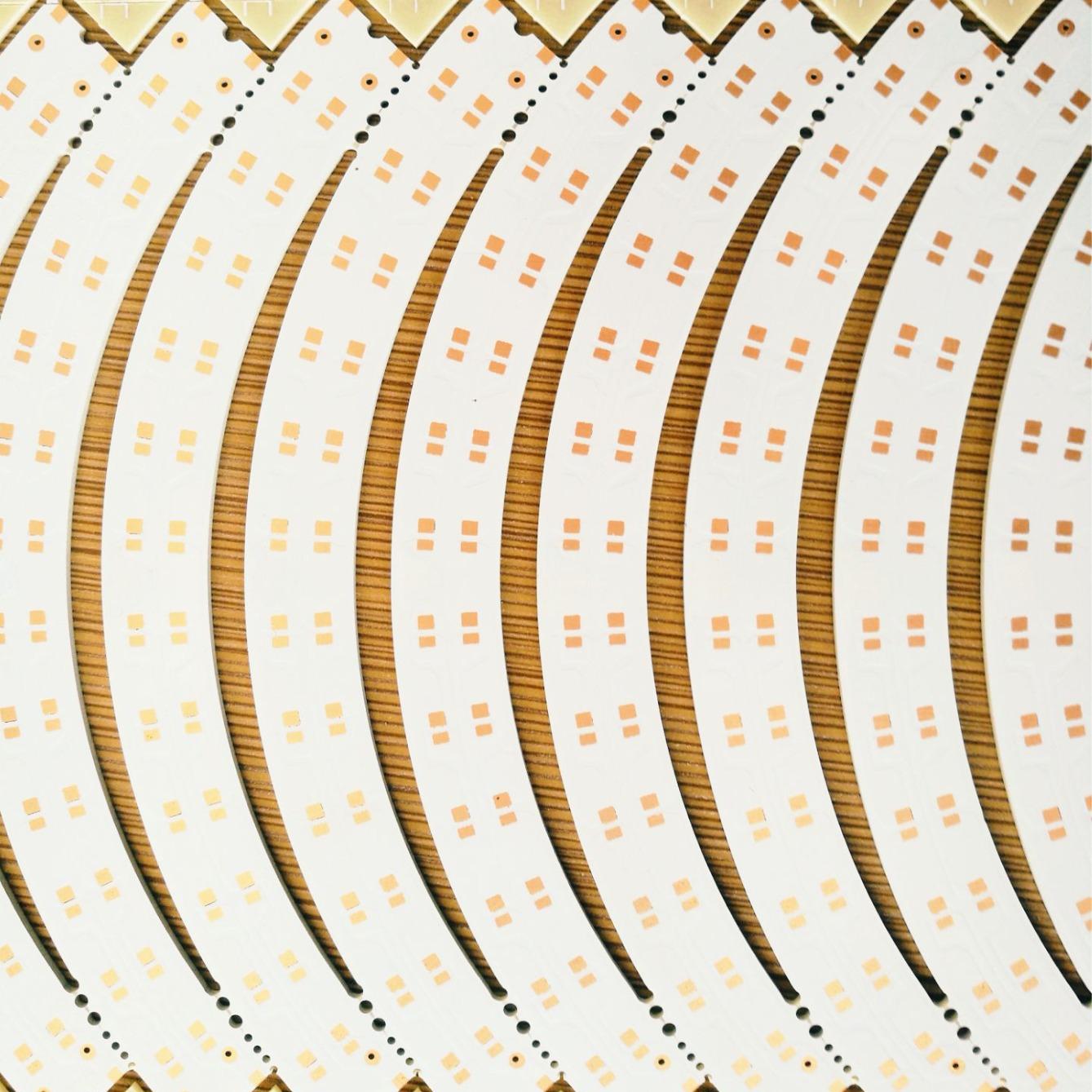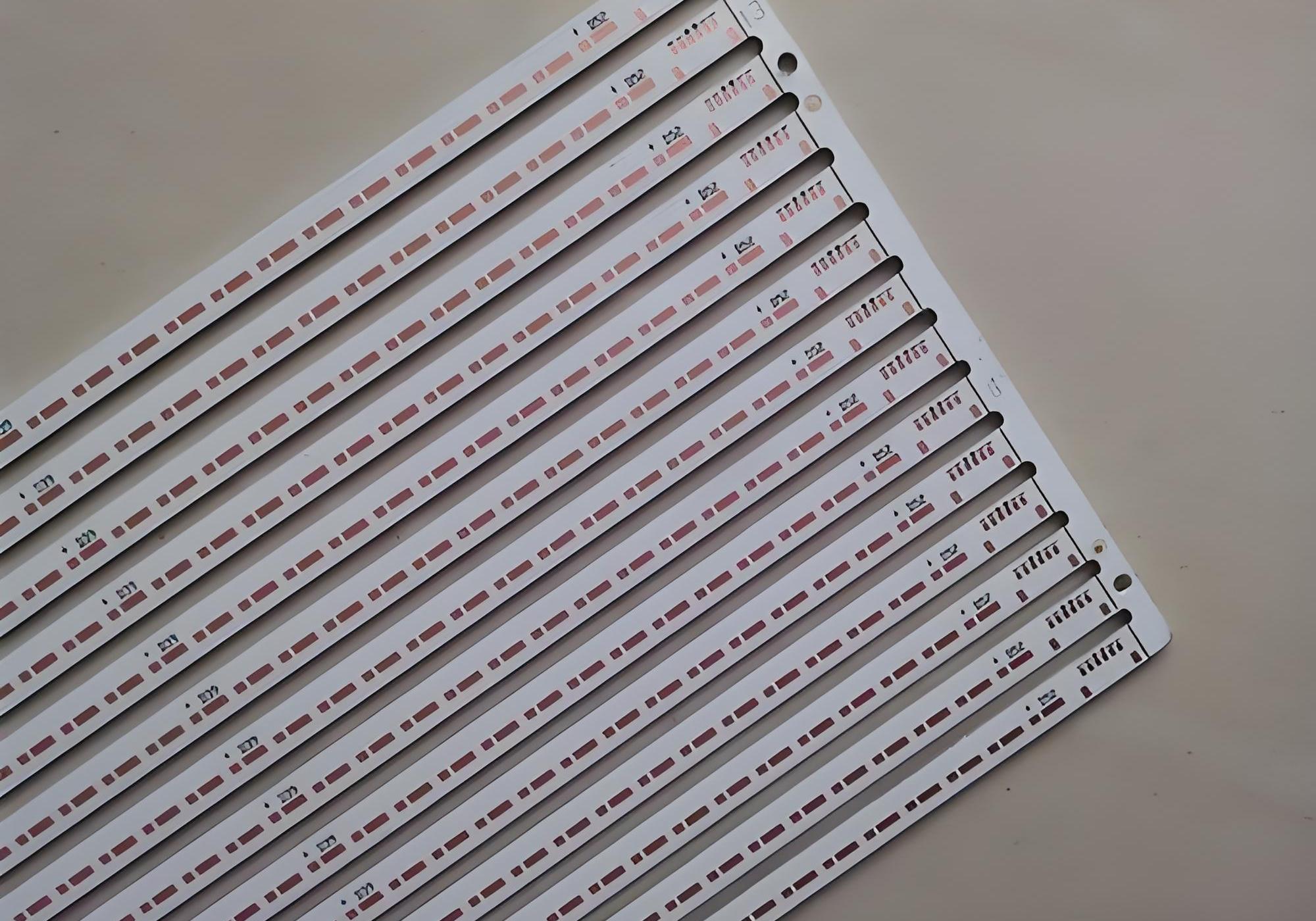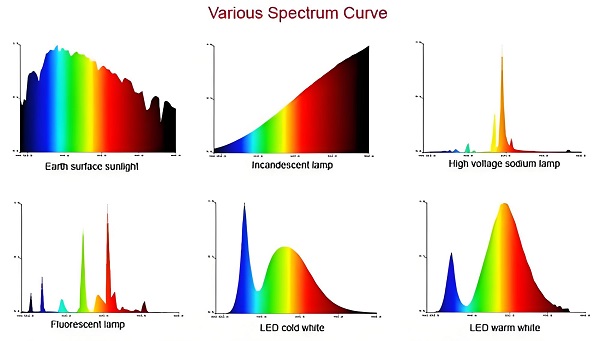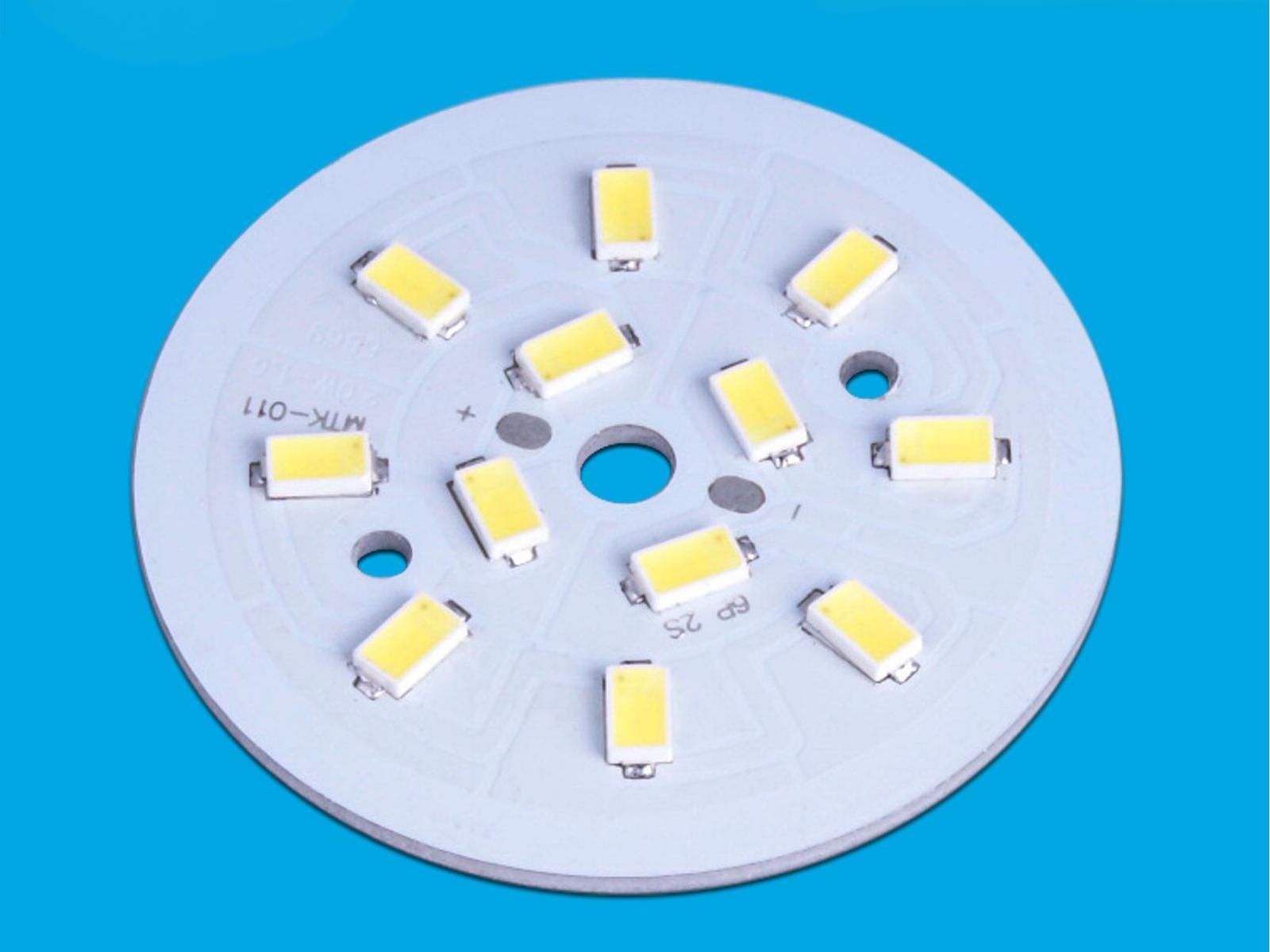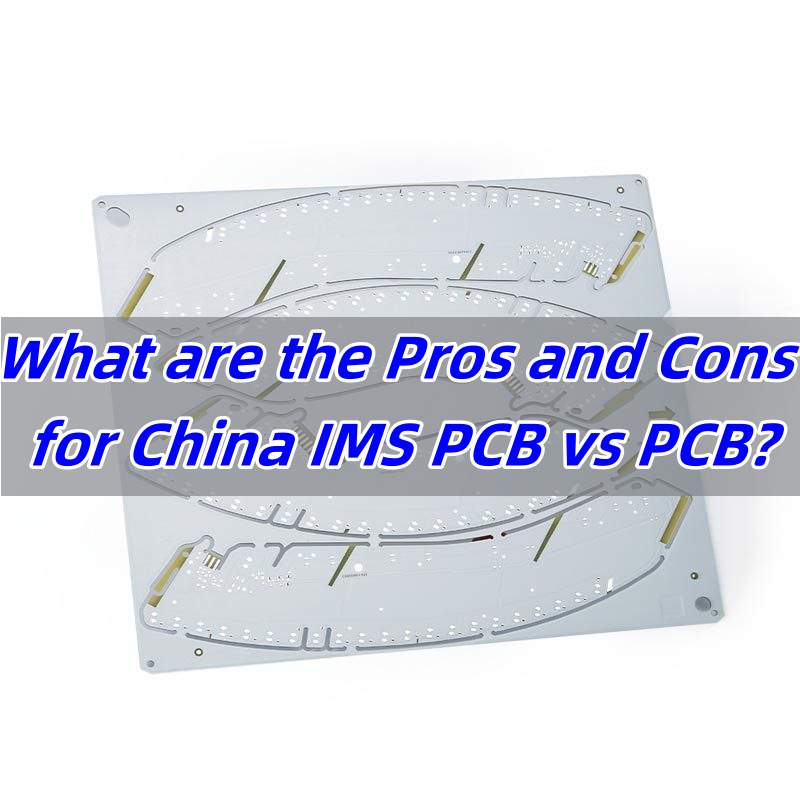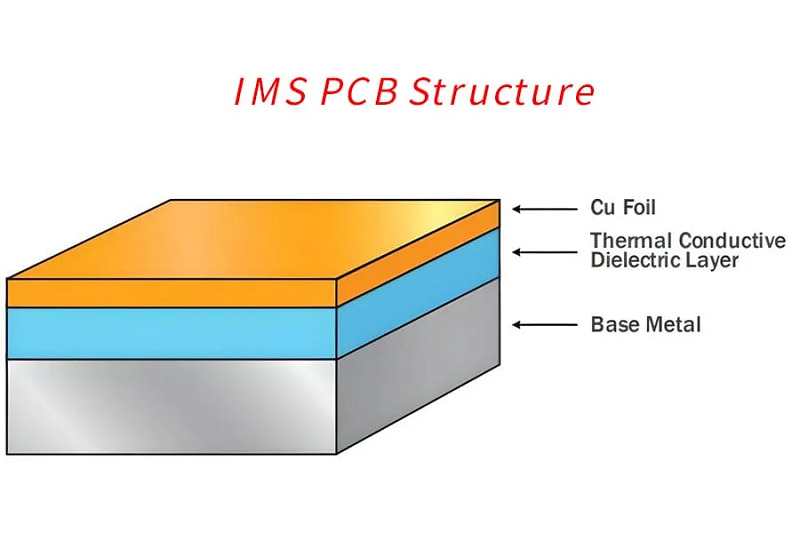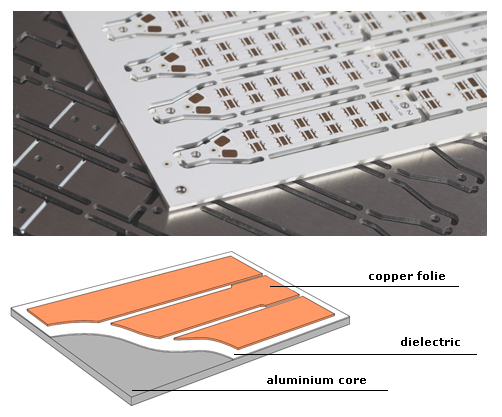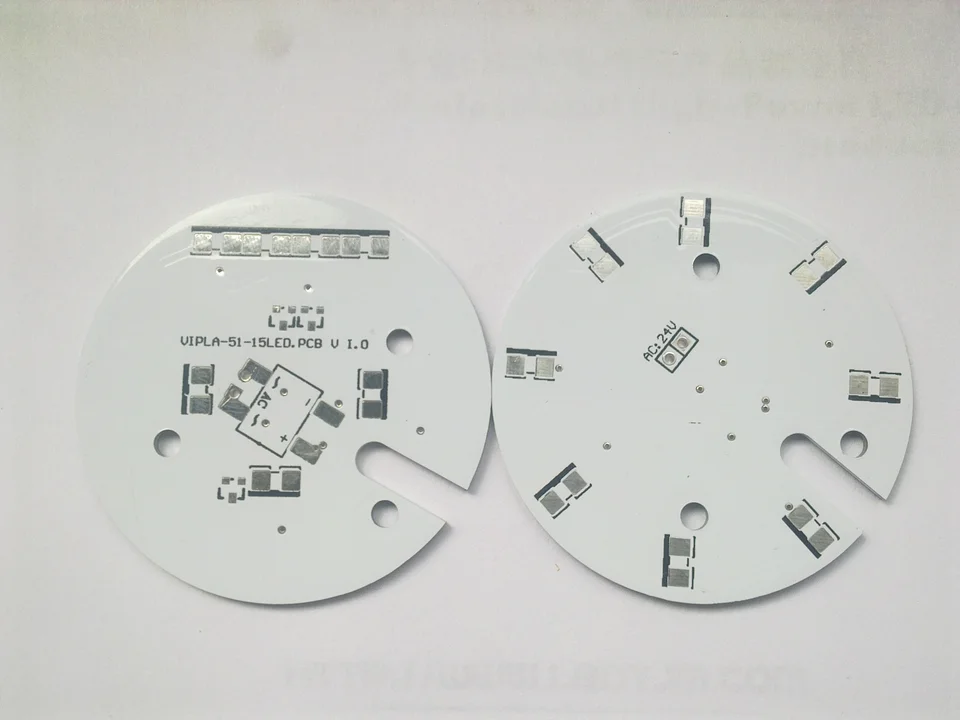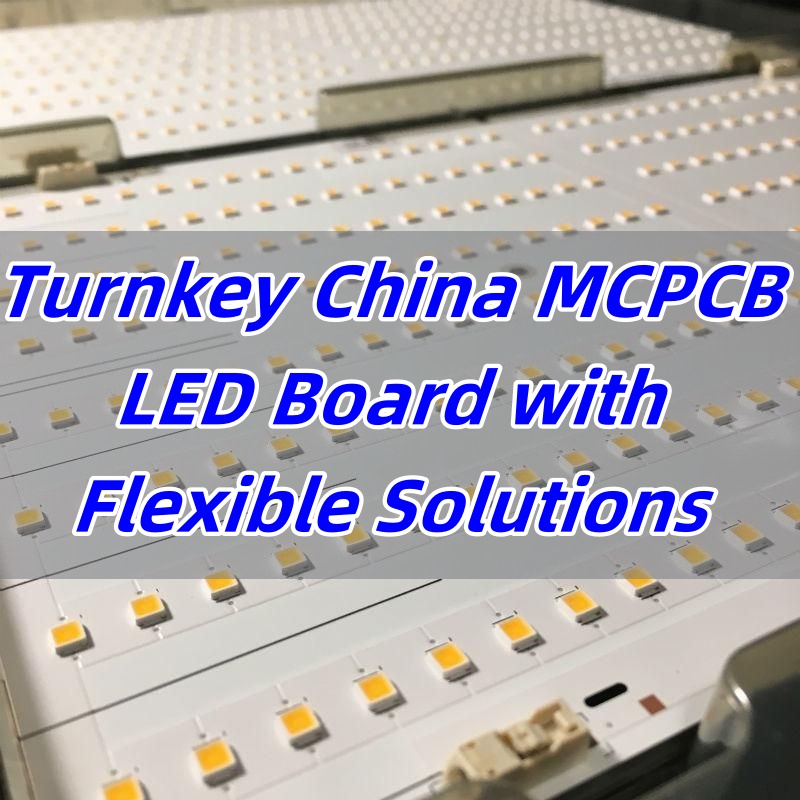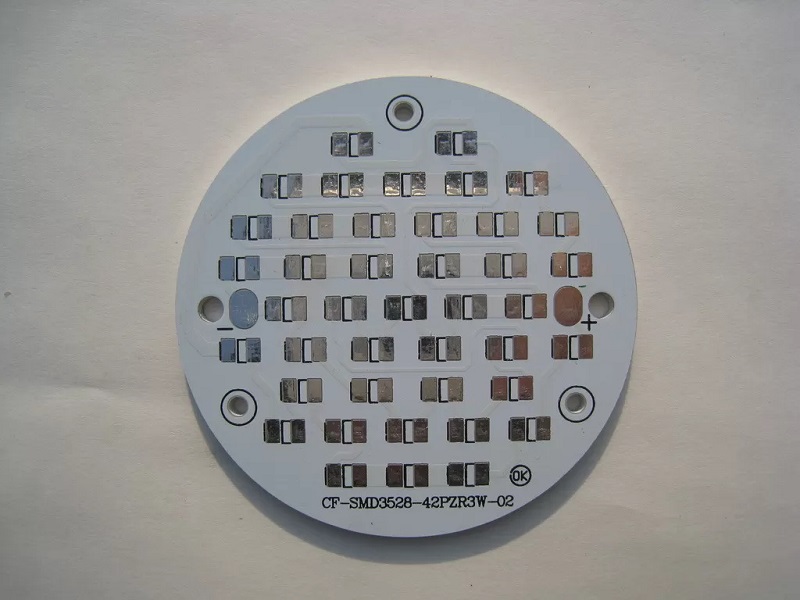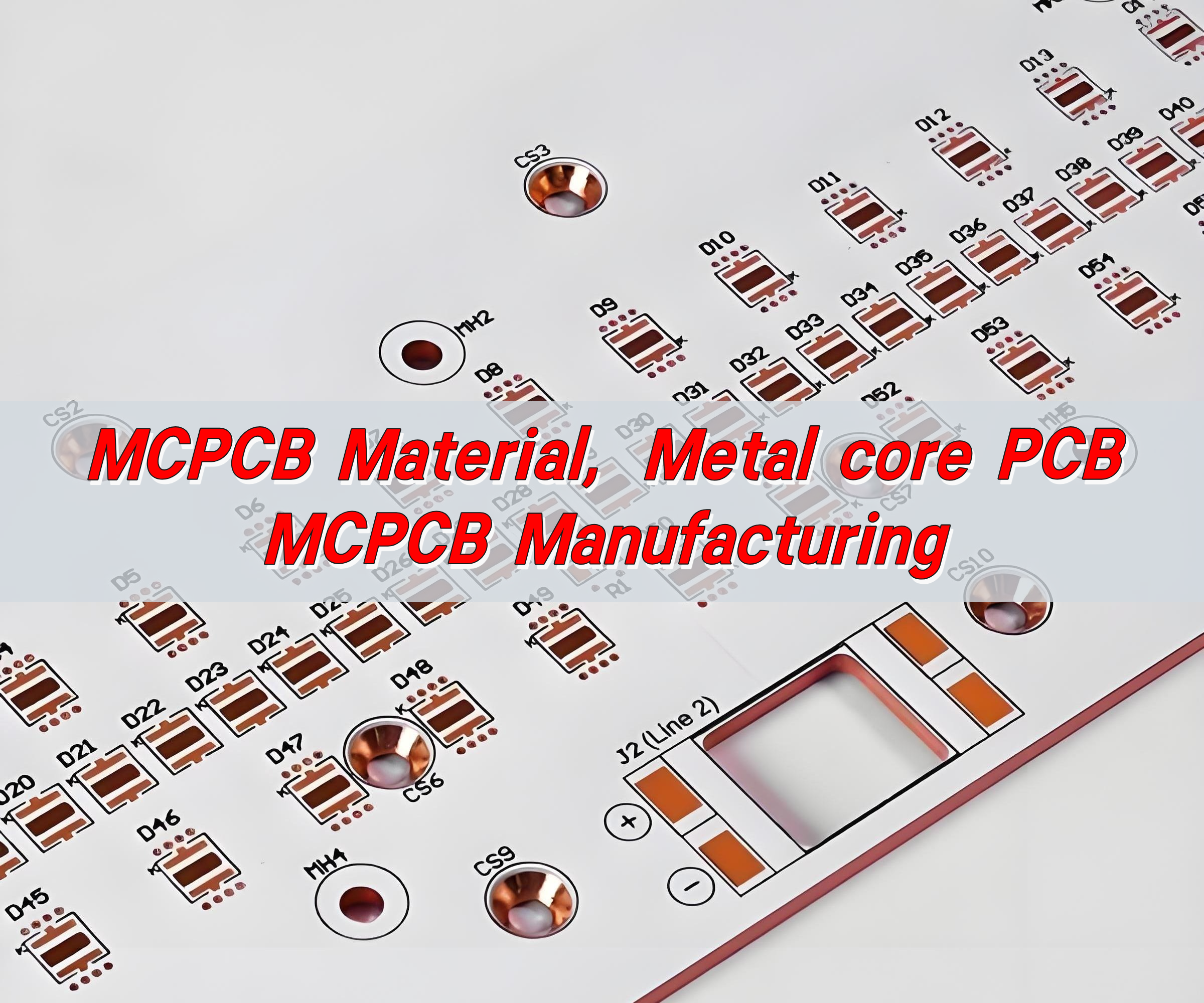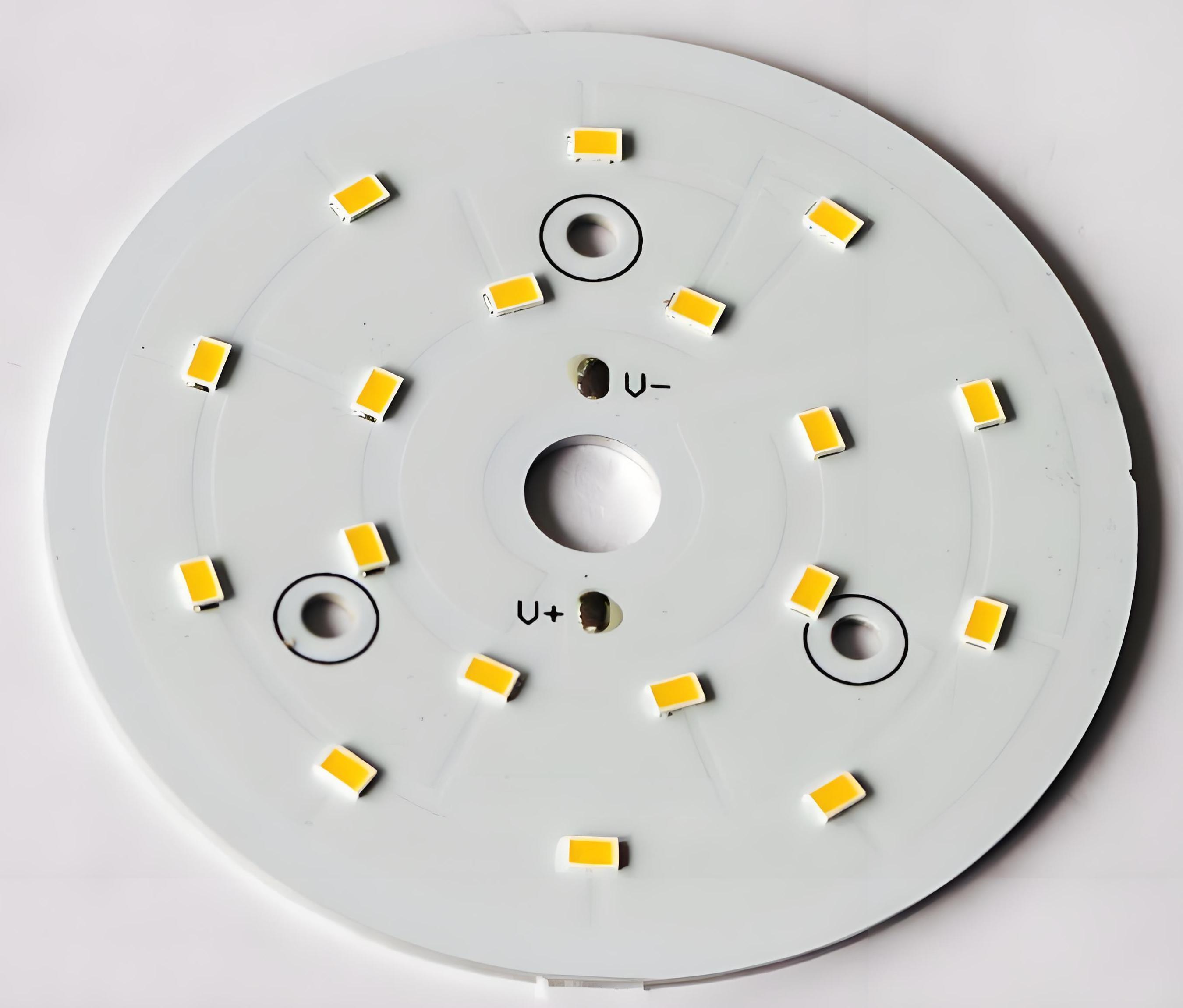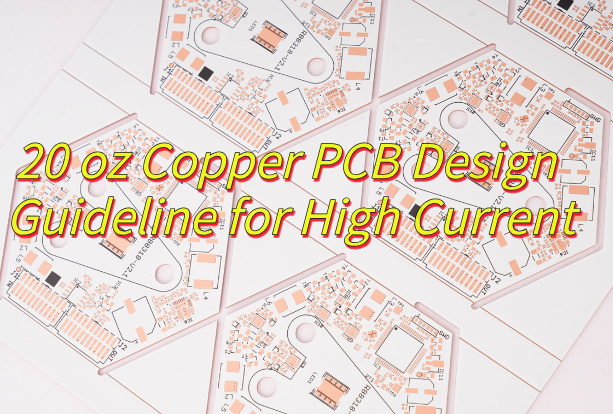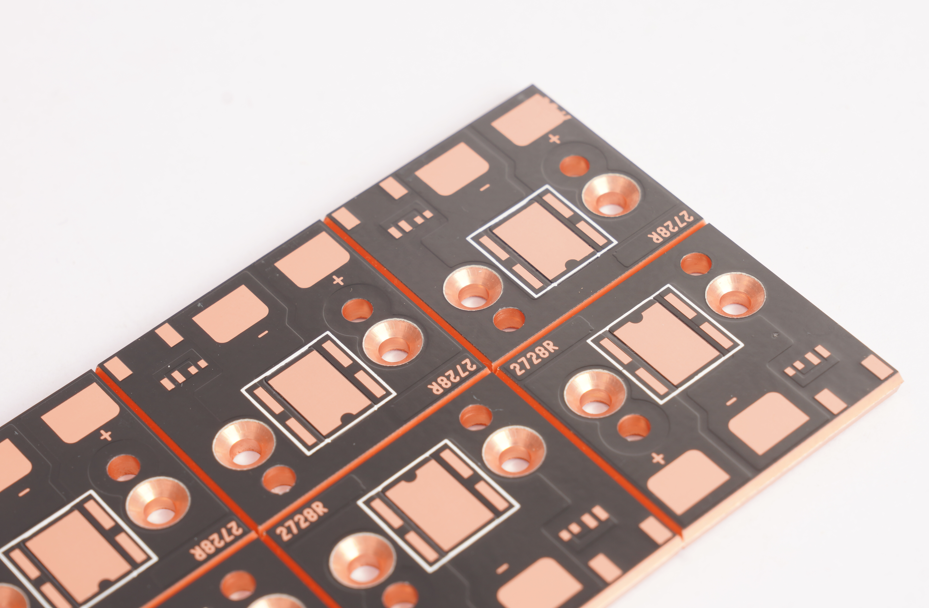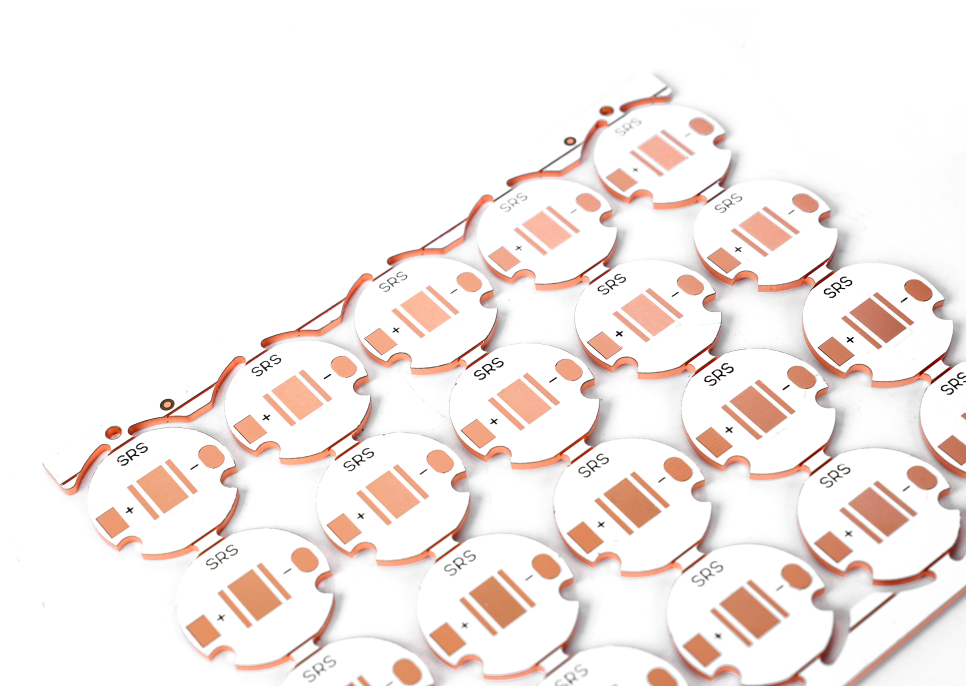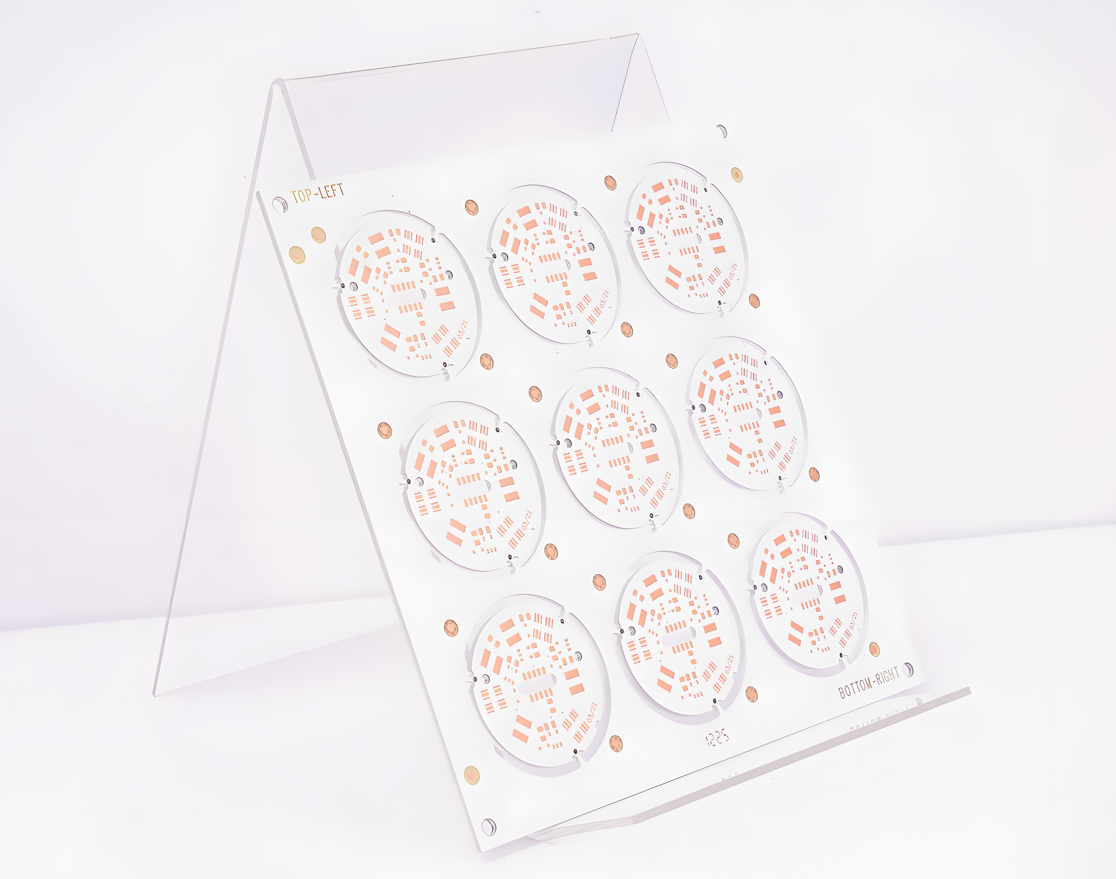LED MCPCB board is a metal-based printed circuit board designed specifically for LEDs. Its aluminum or copper substrate is combined with an insulating thermal conductive layer and a copper foil circuit to quickly conduct heat away from the chip, improve lighting efficiency and life, and is widely used in high-power COB, car lights, street lights and backlight modules.
What is mcpcb led?
Short for Metal Core Printed Circuit Board, MCPCB is a game-changer in the world of LED lighting.
Unlike standard circuit boards, an MCPCB LED board has a special metal base, often aluminum. This metal base isnât just there for supportâitâs a built-in cooling system.
Heat is the enemy of LEDs, and the metal in an MCPCB helps pull heat away from the LEDs, keeping them cool, strong, and long-lasting.
MCPCB boards are commonly used in LED bulbs, light strips, automotive lights, floodlights, and backlit panels. The key reason is simpleâthey work better under heat, last longer, and deliver brighter, more stable light.
What is the full form of Mcpcb LED?
MCPCB LED stands for Metal Core Printed Circuit Board for Light Emitting Diode applications. Hereâs the breakdown:
- M = Metal
- C = Core
- P = Printed
- C = Circuit
- B = Board
These boards have one core purposeâto drive LED lighting performance to a higher level. The aluminum (or sometimes copper) base inside the board spreads heat away from the light source, keeping everything running smoothly.
- Copper Foil Layer: the copper layer used is relatively thicker than normal CCLs ( 1oz-10oz). A thicker layer of copper means a larger current carrying capacity.
- Dielectric Layer: the Dielectric layer is a thermally conductive layer and is around 50ÎŒm to 200ÎŒm thick. It had a low thermal resistance and it suitable for its application.
- Aluminum Base: The third layer is the aluminum base which is made up of aluminum substrate. It has a high thermal conductivity.
What are the types of LED board in lighting?
Lighting applications demand variety. LED PCBs come in many forms to meet these needs.
- Standard FR4 LED PCBs: Made with traditional fiberglass, theyâre good for low-power lights. But they struggle with heat.
- Aluminium LED PCBs: The most common metal core PCB used in LED applications. Excellent thermal performance. Lightweight, cost-effective.
- Copper Core LED PCBs: Used when extreme heat dissipation is needed. Stronger than aluminum but also more expensive.
- Flexible LED PCBs: Ideal for curves and corners. Used in design-focused lighting.
- Ceramic LED PCBs: Rare, but they handle high heat exceptionally well.
Among these, MCPCB LED boardsâespecially aluminum onesâlead the industry for high-lumen applications due to their superior heat control.
How is MCPCB LED board assembled?
The assembly of an LED MCPCB board involves several precise steps:
- Solder Paste Application: A layer of solder paste is applied onto the pads of the metal core PCB using a stencil.
- Pick & Place Process: LED chips and other surface-mount components are placed onto the soldered areas using high-speed machines.
- Reflow Soldering: The board goes through a reflow oven. Heat melts the solder paste and secures the components in place.
- Inspection: Automated Optical Inspection (AOI) checks for soldering accuracy. This step ensures every component is perfectly aligned and attached.
- Testing: Final tests simulate real-life lighting conditions to verify the LED PCBâs performance.
Assembly must be precise and efficient. And with aluminium PCB bases, the process also requires care to avoid overheating during reflow.
How to test led circuit board?
Testing is where quality becomes visible. Hereâs how to ensure every MCPCB board performs as expected:
- Visual Inspection: This checks for soldering issues or misplaced components.
- Multimeter Testing: This tool checks whether power is flowing correctly across the circuit.
- Functional Testing: Apply voltage. Does the LED light up properly? Are brightness levels correct?
- Thermal Imaging: Some use infrared cameras to check for hotspots that indicate poor heat dissipation.
Reliable mcpcb led boards pass these tests with ease, offering users the confidence of durability and safety.
How does an aluminium PCB help LED lights?
Aluminum PCBs are the key enabler behind high-performance LED lighting. Hereâs why they matter:
- Heat Dissipation: Aluminium spreads heat away from the LED chip faster than traditional materials.
- Durability: Aluminium boards are solid. They withstand physical and thermal stress better than fiberglass.
- Lightweight: Despite their strength, aluminium PCBs are lightâperfect for compact or portable lighting products.
- Longer Lifespan: Cooler LEDs mean longer-lasting lights. An LED on an aluminium PCB can last 50,000+ hours with minimal loss in brightness.
- Energy Efficiency: Efficient cooling means less wasted energy, which boosts overall performance.
What is the difference between PCB and Mcpcb?
Though they look similar, PCB and MCPCB are built for very different challenges.
Base Material:
- PCB: Uses FR4 fiberglass or plastic.
- MCPCB: Uses aluminium or copper for better thermal control.
Thermal Conductivity:
- Standard PCB: Poor heat dissipation.
- MCPCB: Excellent thermal performance.
Cost:
- FR4 PCBs are cheaper.
- MCPCBs cost more, but offer superior reliability for high-power devices.
Applications:
- PCB: Best for low-power electronics.
- MCPCB: Ideal for LEDs, power supplies, automotive lights, and high-intensity applications.
So, while both have their place, when heat is involved, MCPCB wins.
Is MCPCB LED board better than FR4?
Yes, and itâs not even close in most LED applications.
FR4 PCBs are fine for low-power, low-heat environments. But when you add in high-lumen LEDs, the heat spikes. FR4 canât handle that for long.
MCPCB LED boards step in with built-in heat control, thanks to their metal core. They maintain brightness, extend lifespan, and prevent failure. Thatâs why most LED manufacturers rely on aluminium MCPCBs for performance lighting.
In short, if your LEDs matter, MCPCBs deliver.
What affects LED PCB board price?
The price of a led mcpcb board can vary widely. Hereâs what affects it:
- Material Type: Aluminium costs more than FR4, copper even more.
- Board Thickness: Thicker boards handle heat better but cost more to produce.
- Thermal Conductivity Rating: The better the heat transfer, the higher the price.
- Board Size and Layers: Larger and multi-layer boards need more material and time.
- Design Complexity: More components, special shapes, and tight tolerances mean higher costs.
- Volume: Bulk orders usually lower the mcpcb led board price.
- Surface Finish: ENIG, HASL, or OSP finishes affect both durability and cost.
- Assembly Services: Adding LED pcb assembly raises prices but saves time and effort.
Still, when you think long-term, the right LED PCB saves money, longer life, fewer failures, and better performance.
Conclusion:
MCPCB LED boards, especially those made with aluminium, are the heartbeat of modern lighting. Theyâre engineered to handle heat, boost brightness, and outlast traditional boards.
Aluminium PCB is the most popular type, balancing cost and performance. Compared to FR4, MCPCB boards are simply better for LEDs.
For more details, quotes, or expert guidance on choosing the right LED MCPCB board, contact our team at sales@bestpcbs.com



